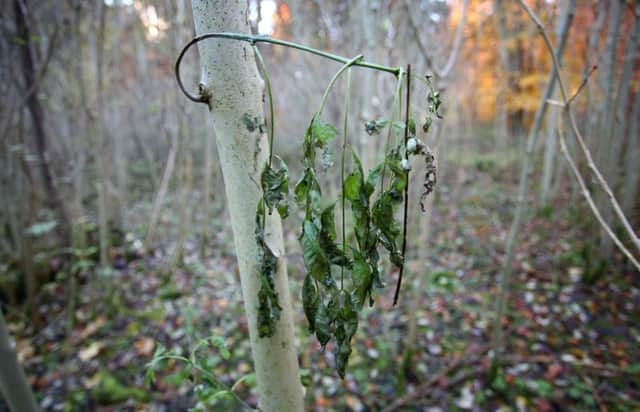Defining trees of Yorkshire Dales landscape are being killed off by an incurable disease


About 80 per cent of the ancient semi-natural woodland found throughout the National Park is threatened by ash dieback and with no known remedy to halt its spread, the disease will dramatically change the character of the Yorkshire Dales scenery over the next two decades.
The disease has now spread right across the National Park and infected young ash trees with bare branches can be seen on roadsides verges all around the Park, as well as in woodlands.
Advertisement
Hide AdAdvertisement
Hide AdAsh dieback is caused by a fungal pathogen and was only confirmed in the UK six years ago.
Geoff Garrett, senior trees and woodlands officer at the Yorkshire Dales National Park Authority, said: “The confirmed arrival of ash dieback disease in 2012 prompted a spate of news coverage but many people won’t have heard much about it since then. I think it’s important to raise awareness of how quickly the disease has spread.
“Ash is the dominant tree in the Park’s ancient woodlands, supporting a very special cohort of plants and animals.
“Over the next 20 years the disease is going to have a devastating impact, so much so that ash will likely become relatively minor in the landscape.
Advertisement
Hide AdAdvertisement
Hide Ad“Mature trees will take decades to die, but young trees are being killed off very quickly.”
There is little the park authority can do to tackle the disease itself, he said, but it can make sure that the spaces left by dead ash trees are filled by other native trees.
The National Park Authority has already removed ash from all tree-planting schemes.
Ancient semi-natural woodland covers about one per cent of the Yorkshire Dales National Park.
Advertisement
Hide AdAdvertisement
Hide AdMr Garrett said he expected there to at least be some ash trees that are resistant to the disease.
Previous estimates suggest that there are about 1.2m resistant trees nationwide but only around two per cent of trees have been found to survive in areas where ash dieback is well established.
Government scientists and the Forestry Commission is involved in research to try to identify and develop ash trees that are most tolerant to the disease.